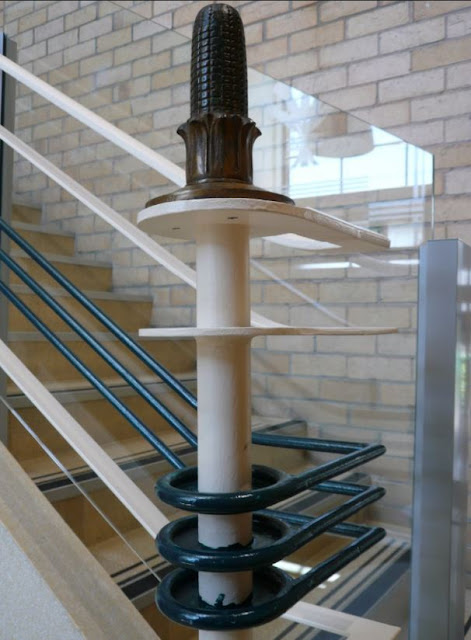Les Barnes records that the Brunswick Council owned some of the land and that it was partially zoned residential. This caused some difficulty, but a larger objection, at least to some councillors, was that it was alleged that entrepreneur and noted bookmaker John West held a leading interest in the business.
In the end the Council granted a permit on the grounds that it would bring employment to the City of Brunswick. Harry Norris, a prominent Melbourne architect, designed the factory, which was in the Moderne style.
The Edward Street facade, date unknown. Image courtesy Little Projects and Tip Top Apartment Complex manager Sebastian Golotta
I took this photo of the same view on 23 January 2018.
I took this photo looking down towards Lygon Street on 5 September 2011, just as construction of the new Tip Top complex was beginning.
I took this photo from a similar spot on 23 January 2018.
Doorway facing Edward Street, 23 January 2018.
Corn motif on the base post of the staircase in the restored Edward Street building, 23 January 2018.
And some of the floor details, 23 January 2018.
Thanks to building manager Sebastian Golotta for showing me around.
By the second half of 1939, during the first days of World War Two, the factory began production. The newspapers of the time were filled with war news, but I did find the following article in the Age, 24 October 1939.
And finally, some images of Brunswick's Northern Bakeries site at work. (Images courtesy Little Projects and the Tip Top Apartment Complex manager):
(Interpretive panel, 23 January 2018)
Sources:
Les Barnes research notes
Les Barnes, Street names of Brunswick
John Wren, Australian Dictionary of Biography entry, http://adb.anu.edu.au/biography/wren-john-9198
Harry Norris, Wikipedia entry, https://en.wikipedia.org/wiki/Harry_Norris
Age, 24 October 1939






















